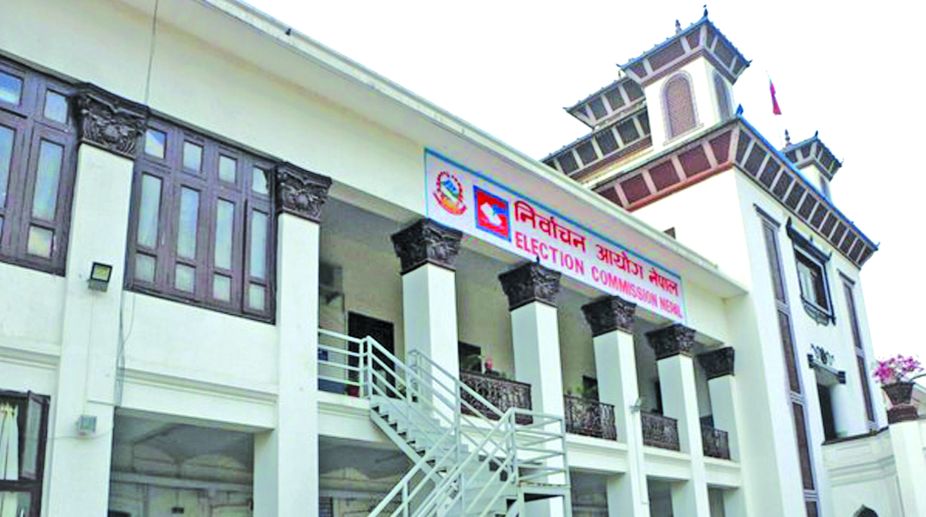Assam’s grand Jhumoir show: 8,000 performers, PM Modi to attend
Assam’s Jhumoir Binandini event on February 24 will feature over 8,000 performers showcasing the traditional Jhumoir dance at Sarusajai Stadium, Guwahati.

Interestingly, even as the Election Commission (EC) of Nepal is yet to announce the results of parliamentary and provincial assemblies elections conducted on November 26 and December 7 under the proportional representation system on the basis of the Sainte-Lague formula, the Indian Prime Minister Narendra Modi on 21 December congratulated Nepali Congress chief and Prime Minister SB Deuba for successfully completing the elections, and UML Chief KP Sharma ‘Oli’ and PK Dahal, chairman of the Maoist Centre for the landslide victory of the Left alliance in the elections. He has also invited the ‘would be’ PM, Mr Sharma to India and shown his eagerness to work with the new government.
Earlier, Nepal had conducted three-phased local level elections in May-September peacefully after adopting the new constitution in September 2015. However, through the federal parliamentary election, it has decisively chosen its political course. The Left alliance of the CPN-UML (UML) and the Maoist Centre (MC) has almost swept the polls at the national and provincial levels except province-2 where Madhes-centric parties have proved their own popular strength.
Advertisement
Ironically, while the final results are awaited, the vague and complex provisions of the Constitution that was adopted hurriedly and with the conflicting interests of the Left alliance and the outgoing government, the nation appears to have been trapped in unnecessary controversy. Significantly, the ordinance to hold elections to the National Assembly(NA), which is held up with the president’s office for the last two months, has become the bone of contention between the government and the Left alliance.
Advertisement
The winning Left alliance wants the Deuba Government to resign immediately to pave the way for the formation of the new government enabling it to appoint governors for seven provinces to convene provincial Assemblies (results not declared) and redraft the ordinance with regard to the electoral system for NA. The government on the other hand is insisting on the authentication of the ordinance immediately as it was legally forwarded to the president. Hence, uncertainty prevails as to how much time will be needed to get out of the present standoff.
The electoral results in favour of the Left alliance are along expected lines based on the performances of the UML and MC in the last local level elections. Strategically, the alliance was formed last October with three objectives. First, it was to contest both parliamentary and provincial elections jointly to secure majority in parliament and provincial assemblies. The second objective was to convert the alliance into a single communist party to rule the country for a long time. And lastly, it was to derive maximum economic benefits from China’s Belt and Road Initiative (BRI) as a signatory to the Initiative, which may reduce, if not eliminate, the country’s economic dependence on India.
For elections to the federal and provincial legislatures, the UML and the MC shared seats on a 60:40 ratio to get electoral benefits from each other. The sharing was also made with a view to having two-thirds majority in the house to amend the constitution and replace the parliamentary system with a directly elected executive presidential system to ensure stability of the government, which the parliamentary system failed to provide.
Although the alliance fared well, it could not achieve the desired results, as the electoral results are not up to its satisfaction. The new parliament will have 275 members, 165 to be elected under the First Past the Post system, and 100 through Proportional Representation (PR) system. Under the first segment, the UML has secured 80 seats and under PR it is likely to have 41 seats. In all, it will have 121 seats, 17 short of a majority in the House. However, since MC has 36 seats under the first category, a majority is secured. But its dream of getting a two-thirds majority remains elusive, as the MC is likely to secure only 17 seats under the second segment, leaving a gap of ten seats to achieve the 184 seats for such a majority. Even after adding five independent members, there remains a gap of five seats. Hence, in spite of all efforts neither could the UML get its own simple majority nor could the alliance succeed in getting two-thirds majority in the House.
Sadly, the Nepali Congress (NC), which was the single largest party with more than 200 seats in the House of 601 in the pervious legislature/parliament, has got its strength reduced, as it has secured only 23 seats under FPtP segment and is likely to secure 40 seats under PR system. However, there is a spectacular achievement of the Sanghiya Samajvadi Forum and the newly formed Rashtriya Janta Party, which have secured 10 and 11 seats respectively under FPtP and may secure six seats each under PR system. These two parties had formed an alliance to share the seats recently after realising their past mistake of contesting elections independently by dividing their votes. It was also necessitated to cross the threshold of three percent of votes for getting representation under the PR segment.
The political impasse has polarised the country as had happened in 1994 when the then Manmohan Adhikari led UML government had dissolved the House of Representatives when the no-confidence motion was already registered. People were keen to have a new government soon but their aspirations are getting watered down by the impasse.
(The writer, a former Election Commissioner of Nepal, is associated with the Nepal Transition to Peace Institute.)
Advertisement